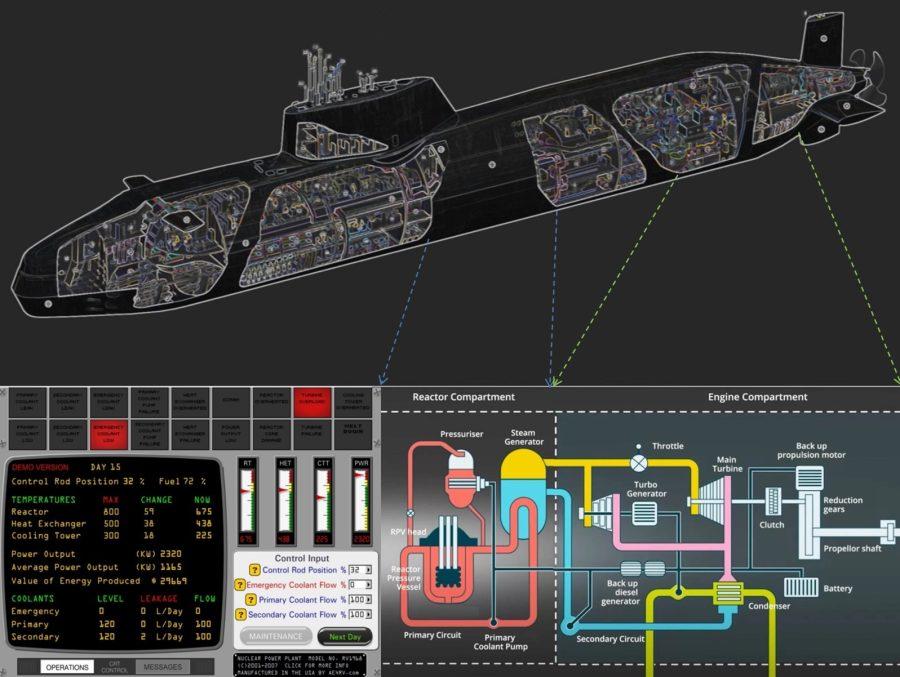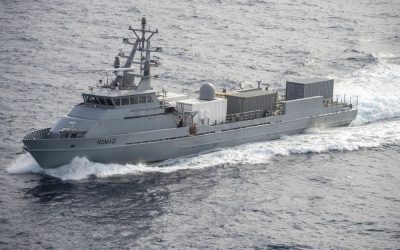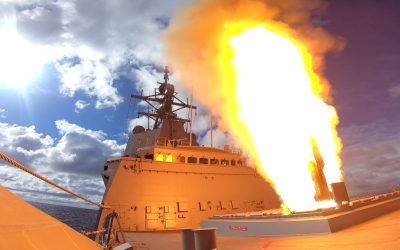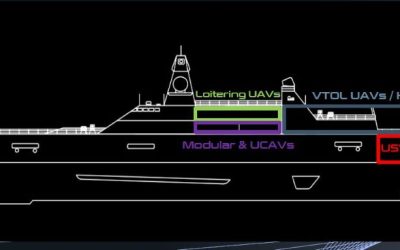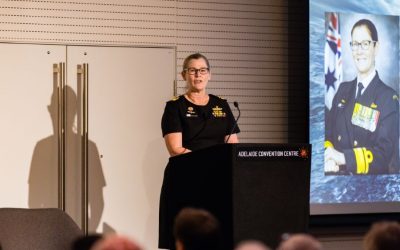By Dr MJ Cianni, CEng., FRINA, FIEAust
In order for the AUKUS submarines to operate for 33 years without refuelling they will need to use highly enriched uranium (HEU) at 93% to 97%, with a mass in excess of 200Kg. Since HEU is highly efficient, enabling a 200Kg HEU mass over 33 years would give a use rate of just 6.06Kg per year using the new PWR3 reactor.
Rolls-Royce, which produces the PWR2 submarine reactor for the Astute-Class nuclear submarines, states that: “a small spoonful of uranium is all it takes to power fully-submerged submarine on a full circumnavigation of the world”.
This can be explained by Einstein’s theory of mass-energy equivalence, Energy E=mc2 (where m = mass x c = the speed of light – approx. 300 million metres per second, squared) creating an immense amount of energy for a very small mass, and the nuclear chain reaction being self-sustaining, having reached Critical mass i.e. the minimum amount of a given fissile material necessary to achieve a self-sustaining fission chain reaction. This is central to nuclear reactor design (controlled neutron fission), at this point the number of generated neutrons equals that of lost neutrons.
Uranium is a silvery-grey metal and has the density 70% higher than lead, and slightly lower than that of gold or tungsten, hence 200Kg of uranium would fit into a small 10 Litre bucket. Natural uranium mined from the ground consists mainly of an isotope called uranium-238 mixed with small amounts (0.7%) of the key isotope uranium-235.
For the reactor to operate the percentage of uranium-235 has to be increased by “enrichment”, for AUKUS submarines this will be 93% to 97%. The level of enrichment is a crucial factor in maintaining a safe and sustainable chain reaction.
Inside the reactor pressure vessel, the uranium-235 is bombarded with neutrons, causing some of the nuclei to undergo nuclear fission. A moderator material in the core slows down the neutrons released from fission so that they cause more fission to occur. The moderator usually consists of water, alternatively heavy water or graphite can be used. This causes more neutrons to be released and the process continues in a nuclear chain reaction, generating heat. This heat in turn heats the circulating water in the primary loop, which is kept under pressure by the pressuriser so that it does not boil.
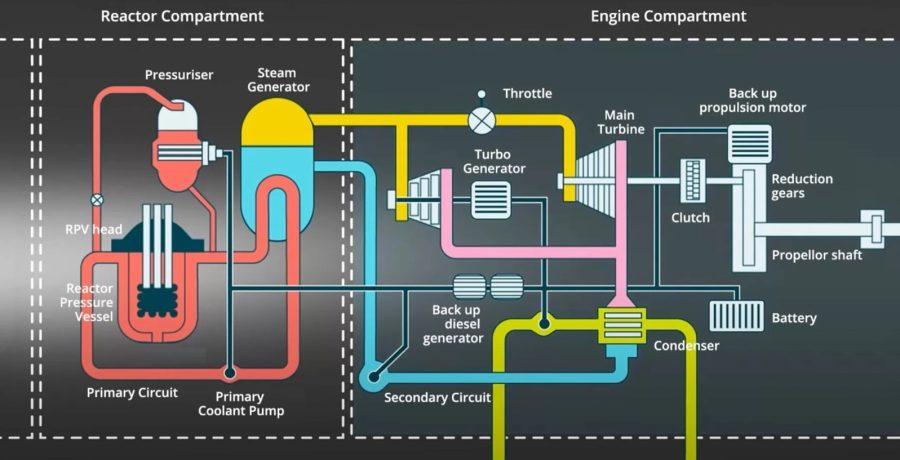
Astute-Class Nuclear Submarine Reactor and Engine
The water in the primary loop operates at a temperature of approximately 300 degrees C and the chain reaction is controlled by uranium blocking control rods inserted between the rods of uranium-235 fuel, for example during an SCRAM emergency they can be fully inserted and stop the nuclear reaction in the shortest possible time. In the event of any radioactive contamination in the primary water it would be contained in the primary loop and circulation of the water may rely on natural circulation to eliminate noise and the power requirement that would be introduced by using pumps.
The hot water in the primary circuit is then fed into steam generators, connected to a secondary circuit. The water in the steam generators is converted into steam and passes through steam driers on its way to drive steam turbines, which are in turn connected to the propellers via a clutch and gear arrangement as well as electricity generators, causing them to turn at high speed.
Spent steam at low pressure runs through condensers which are cooled by seawater and return the steam to liquid form. This water is then pumped back to the steam generators and continues the cycle. Water lost in this process is topped up by desalinated sea water added to the steam generator feed water.
Rationale
Submarines offer a unique and extreme operating environment. Designed to be submerged for up to six months at a time (in the case of Nuclear Submarines) but with limited oxygen, the potential of using diesel engines for propulsion for long durations and at depth is limited at best even as a back-up to nuclear, as diesel engines need oxygen and venting of exhaust gas (carbon dioxide), known as “snorting”. Oxygen generators can help by creating oxygen from the electrolysis of water, but eventually all non-nuclear submarines have to surface to replenish oxygen supplies for the crew and engines.
However with the introduction of nuclear power, suddenly historically slow underwater vessels turn into warships capable of sustaining 30 knots (56km/h, 35 mph). Considering the current generation of Astute-class submarines have a displacement of 7,400 to 7,800 tons, are 100m long and a diameter of 11m, travelling at 35 mph whilst submerged would be impossible with any other form of propulsion, as would remaining submerged for any length of time operating at that speed.
30 Knots (56km/h, 35 mph) is significant in order to outrun unfriendly submarines and submarine hunter surface ships. The current diesel submarines 23 mph limit makes them susceptible to foreign navies wanting to engage them, if they are detected. The Collins-class maximum submerged duration is 70days.
The key strategic advantage of nuclear submarines to survive a first strike attack, as they are not easily located whilst submerged. The fact that submarines would survive a first strike attack leads to them being a major deterrent for hostilities breaking out in the first place.
System-wide changes rely on critical mass of interested parties, all willing to enter into deep partnerships and collaborations, founded on new levels of trust and commitment to action, not just debate.
